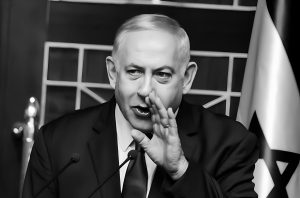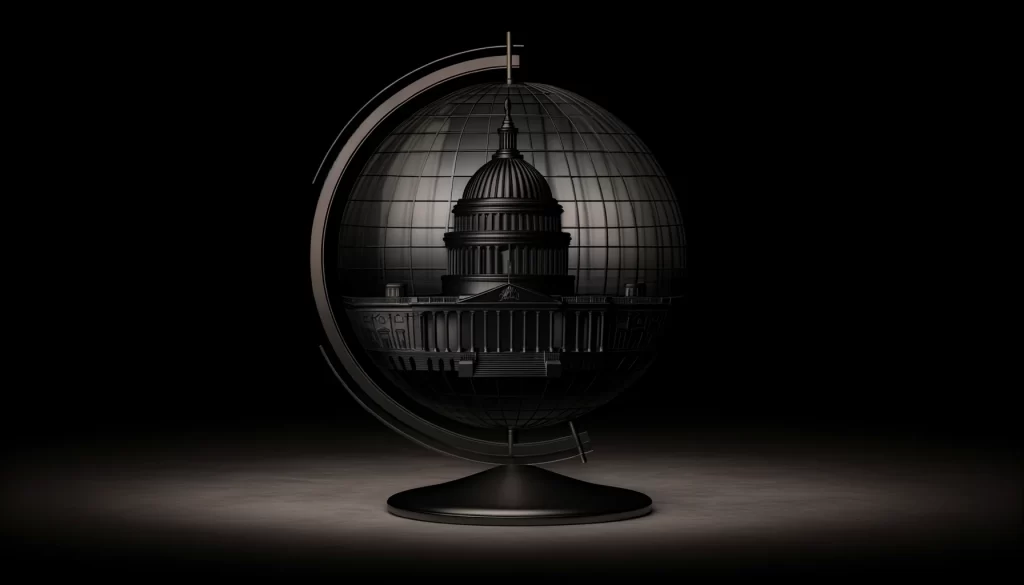
As we stand at the crossroads of history, witnessing the gradual decline of American hegemony, the emergence of a multipolar world order unfolds before our eyes.
MARCH 18, 2024

Academic discourse surrounding multipolarism, and consequently the decline of American hegemony, is often presented as an absolute phenomenon. In this perspective, the world is perceived as either multipolar or not, and the status of American hegemony is seen as either in decline or firmly intact as the global superpower it has been since the conclusion of the Cold War. While some may question the significance of refining the definitions of unipolarity and multipolarity, such deliberations are crucial. The emergence of numerous middle powers over the past two decades has substantially altered our understanding of international relations. This prompts inquiries into the feasibility of a singular global order, whether military and economic metrics alone suffice for gauging raw power, and whether the formation of blocs inherently undermines existing ‘superpowers’. The emergence of new influential international actors necessitates a reevaluation of how we conceptualize and apply these terms. The world, it appears, is not exclusively multipolar, bipolar, or unipolar, but rather a combination of all three. The parameters of political influence are not confined to a single state or a select few; rather, they are contingent upon the varying capacities of these entities.
Since the collapse of the Berlin Wall and the dissolution of the USSR, the United States has undeniably remained the world’s sole superpower. However, the assumption of US hegemony has increasingly come under scrutiny in recent years. The ascent of China’s economic and commercial prowess, alongside that of middle powers such as India and Japan, which have progressively assumed greater roles in economic, political, and military spheres, has cast doubt on America’s hegemonic status. A realpolitik approach to analyzing the formation of blocs and potential global orders challenges the notion of a world dominated by a single nation. While the United States has played a pivotal role in shaping the current paradigm and retains the greatest capacity to influence, deter, and potentially coerce the behavior of its peers, power distribution is pragmatically more intricate. Political, economic, and military power is not uniformly distributed but rather manifests as an imbalanced diffusion among states vying for greater influence.
The United States boasts formidable economic strength, possessing the world’s largest nominal Gross Domestic Product (GDP) and the second-largest by Purchasing Power Parity (PPP). Following the COVID-19 pandemic, the US economy has exhibited resilience, particularly in curbing inflation and revitalizing its domestic labor market, solidifying its position as arguably the most crucial economy globally. Despite its considerable dominance, the US is not impervious to external shocks. Unipolarity implies unmatched power, characterized by either a lack of resistance or the ability to swiftly neutralize threats posed by other states. While this might have been accurate at the end of the Cold War, the global economy now exhibits reduced reliance on the United States, with the US increasingly dependent on others.
China’s accession to the World Trade Organization in 2001 propelled it into a global manufacturing hub, challenging US industrial supremacy. China has spearheaded global nominal GDP growth, accounting for 35% compared to the United States’ 27%. Its labor-intensive economy and significantly lower capital-to-labor ratio have attracted substantial investment. Presently, China is the top trading partner of 120 countries, particularly garnering support in the Global South by presenting itself as a viable alternative to countries wary of US foreign policy. The US, in turn, heavily relies on China, with bilateral trade amounting to 575 billion U.S. dollars, making China its second-largest trading partner after Mexico.
While China has eroded US economic hegemony, other nations have also seized a share of the pie. Mexico, for instance, has greatly benefited from nearshoring, leading to a surge in foreign direct investment (FDI) post-COVID and making it the US’s new foremost trading partner, displacing China. As businesses seek to safeguard their supply chains geopolitically amid the decoupling of US-China trade relations, Mexico, as a strategic ally of the US, stands to receive significant trade redirected from China. Mexico’s economy now ranks as the twelfth largest by GDP and is poised to surpass Russia’s by 2024/2025. Similarly, countries and blocs such as India and the European Union have assumed more significant economic roles. The European Union stands as the largest common market globally, while India, the fifth-largest economy, is projected to achieve a 6% growth rate in 2024, four times that of the US. Consequently, our economic world order exhibits multipolarity, characterized by the uneven distribution of shared power among various states.
However, in military and political realms, the United States maintains a distinct advantage. As articulated by Ian Bremmer, “The US is the only country in the world that can deploy its soldiers, sailors, and military equipment to every corner of the globe. No one else comes close.” With a military budget surpassing that of the next ten countries combined, nearing 900 billion USD, the US holds unparalleled military prowess. While China boasts the most substantial military capability in Asia, its reach remains primarily regional. Russia’s incursion into Ukraine has heightened European states’ reliance on NATO, a US-led institution, for security assurances. Moreover, the US operates over 750 military bases worldwide across more than 80 countries, whereas China has publicly acknowledged only one military base abroad, in Djibouti.
In terms of political power, most countries participate in US-created and US-led institutions such as the United Nations, the World Bank, and the World Trade Organization. Although other countries, particularly from the Global South like India, South Africa, and Indonesia, have emerged as relevant political actors on the international stage, their bargaining power remains inferior to that of the US. Nonetheless, US political hegemony is anticipated to decline, especially with the growing empowerment of multilateral forums such as the G20, although overtaking it seems improbable in the near future. Therefore, the political and security order retains a unipolar characteristic, with US hegemony persisting.
Discourse surrounding multipolarity and the potential decline of American hegemony reflects the ongoing evolution of global power dynamics. While the United States has historically occupied a position of singular dominance, the emergence of diverse middle powers and the economic ascendancy of nations such as China, India, and the European Union present formidable challenges to this entrenched paradigm. Economically, indications of multipolarity are discernible, with power dispersed among various states and regions. However, in the realms of military and political influence, the United States continues to maintain a preeminent position, albeit facing evolving dynamics and emerging challenges. It is pertinent to recognize that the global order may not be strictly unipolar, bipolar, or multipolar, but rather may exhibit a multipolarity of global orders, reflecting a complex interplay of competing interests and shifting alliances. As we navigate this intricate landscape, a nuanced understanding of these dynamics and adaptive strategies are imperative to effectively engage with the evolving contours of an increasingly multipolar world order.
A curated seletion of FA’s must-read stories.
Written By: SHAGNIK BARMAN
Written By: BERK TUTTUP
Written By: ABBY L’BERT
Written By: BILLY AGWANDA
Written By: HIRA SARWAR
Written By: BATUHAN GUNES
Written By: LEON REED
Written By: DARSHAN GAJJAR

Originally from Mexico, Marco Méndez holds an MA (Hons) in International Relations from The University of Edinburgh, and specializes in security, risk advisory, and intelligence tradecraft. As Head Delegate of the Mexican Youth Delegation at the G20, he led negotiations at the Y20 summit in 2022. Currently, Méndez works as a Research Analyst at Dragonfly Intelligence, as part of the Terrorism Tracker Team where he tracks and analyses terrorist activity worldwide. Additionally, he works as a Latin America Research Analyst at London Politica, examining and writing on developments across the region. Previously, Méndez worked at the Inter-American Committee Against Terrorism, supporting the development of national cybersecurity strategies across the Americas, including incident response mechanisms, cyber diplomacy, and national cybersecurity policies.
Written By: GABRIEL RAMIREZ
Written By: DILARA SAHIN
Written By: DILRUBA YILMAZ
Written By: NILAY CELIK
Written By: ELDANIZ GUSSEINOV
Written By: JOSEF SCHOEFL
Written By: SELCAN BEDIRHANOGLU
Written By: FATIH CEYLAN
FA’s flagship evening newsletter guilding you through the most important world streis ofthe day. Delivered weekdays.
